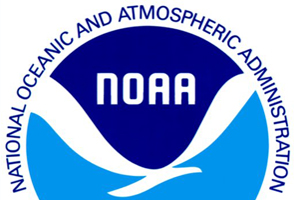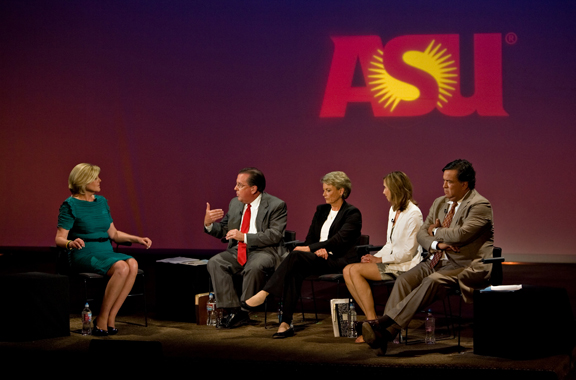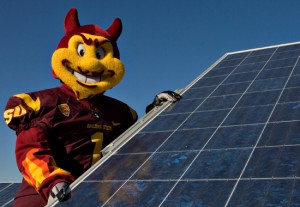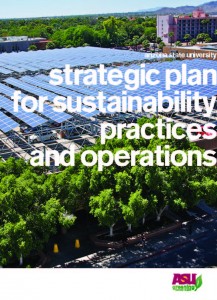Q&A with Kristin Mayes
Kristin Mayes is a Senior Sustainability Scholar in the Global Institute of Sustainability and a professor of practice in the Sandra Day O’Connor College of Law where she is director of the Program on Law and Sustainability. From 2003 to 2010 she served on the Arizona Corporation Commission – the state’s utility regulatory agency. As chair of the commission she coauthored Arizona’s ambitious renewable energy and energy efficiency standards.
What inspired your work in sustainability policy?
I think what triggered my focus on sustainability was the fact that I was appointed to the Arizona Corporation Commission back in 2003. And one of the first things that I did as the Corporation Commissioner was to get involved in the creating of Arizona’s Renewable Energy Standard, which is a major focus of the Commission. It is one of the major responsibilities –setting policy for renewable energy. So it was really the Commission, my job as a Commissioner, that brought me to renewable energy policy.
I had been interested in it since I was a kid. My dad was very involved in the environmental movement, and in Prescott we had solar panels at our house. But it was really not until I became a Commissioner, and became involved in renewable energy policy, and then later, energy efficiency policy, which we also did at the Corporation Commission.
What is your Program on Law and Sustainability?
I think that the most important sustainability project and goal that we’re working on here at the Sandra Day O’Connor College of Law, through the Program on Law and Sustainability, is to start to assist corporations, nonprofits, governments, with finding their way through the new age of regulation and finding their way through what we know is going to be an increasingly complex world sustainability.
So, we are going to be doing a number of projects for nonprofits, for governments, this coming semester and next semester. We’re starting to see groups ask us for assistance with their renewable energy objectives. There’s one government up in North Central Arizona that we may be assisting, and then there’s a – believe it or not – a group of home owners that are looking for help in getting solar deployed in their community that hopefully we’ll be helping.
So, we’re looking for this to be a very pragmatic, very practical way for the community to interface with Arizona State University, and in particular the Law School, but also the School of Sustainability, and a way for our students to get involved in real-world projects in which they are assisting the community with their sustainability goals.
How will your program affect policy decisions?
I hope that the Program on Law and Sustainability will affect future policy and future decision making in a lot of different ways, but chief among them will be the fact that we are educating the next generation of decision makers. I mean, I’ve had my time in the sun, and so what’s going to be important is that we’re educating lawyers and folks at the School of Sustainability – who are going through that program and who might wind up over here at the law school some day – who can take these policies to the next level. And that means that we need people who are going to understand not only where we’ve been, where we are now, but where we need to go.
We are looking at a world in which sustainability is going to be front and center, not just for corporations but governments and nonprofits, and a world in which the way we provide energy, the way we engage in transportation, will be increasingly consumer focused, and increasingly complicated, really. And so, the regulations that we have in the future are going to be completely different than they are today. The businesses, the utility of the future, is going to be radically different than it is today. So we need to be able to be educating people who can be innovative, who are critical thinkers, and who are interested in these topics.
What sustainability challenge concerns you most?
The sustainability challenge that concerns me most, and I think is most pressing for our country and our planet, is probably how we can go from being a world that produces electricity in a very carbon-intensive way, to one that is cleaner, and greener, and meaner, frankly, at least with regard to our utilities. We need more efficiency. We need greater use of renewable energy. We need to explore things like electric vehicles in the transportation sector. And so, we know we have to get to a certain point, which is a cleaner, more efficient energy economy, but we don’t have a lot of time.
We’re polluting at a pace that is far too rapid, we’re seeing environmental impacts that are huge. We’re seeing enormous economic challenges associated with using too much carbon. So, I think, getting to a more carbon-free energy economy and world is my biggest concern.
August 31, 2011










